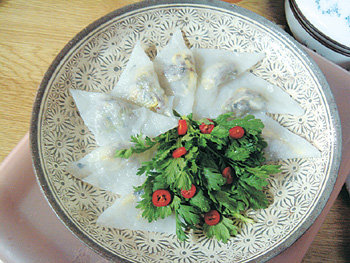Sixty Types of Joseon Food Reproduced through Historical Research
Sixty Types of Joseon Food Reproduced through Historical Research
Posted February. 03, 2005 22:55,

Seolhamyeok, bongchongjjim, seoyeohyangbyeong, jangsu
These are dishes and drinks enjoyed by our ancestors during the Joseon period. Seolhamyeok is bulgogi, bongchongjjum is a steamed dish made with pheasant drumsticks and beef, seoyeohyangbyeong is a sticky cake made using hemp, and jangsu is a drink made by fermenting hulled millet.
SBSs Lunar New Year special HD documentary A Gourmet Expedition around the Eight Joseon Provinces (February 8 and 9, 8:30 a.m.) introduces 60 different types of food from the Joseon era. It is the result of laborious historical research by experts on traditional Korean cuisine.
According to the production team, among the historical documents discovered so far, the number of cookbooks published over the 500-year period from early Joseon to before Japans annexation of the country totals 65. The oldest of these is San Ga Yo Rok (山家要錄1459). In this and other books like Do Mun Dae Jak (屠門大嚼1611) and Gyu Hap Chong Seo (閨閤叢書1809), you find descriptions of hundreds of dishes.
In Part 1 of the documentary, entitled A Duet of Taste and Nutrition: In Search of Lost Flavors, experts reproduce meat, fish, and grain dishes featured in these cooking manuals. Rather than stir-frying or deep-frying in oil, such healthy cooking methods as steaming and boiling are principally used.
The reproduced dishes are evaluated for taste by chefs from Korean restaurants in famous domestic hotels who have over 20 years of experience, and assessed for nutritional value by nutritionists and specialists in Korean medicine. An expert on the history of food and culture analyzes the mutual relationship between dietary and social changes.
Part 2 is entitled Food as Medicine: The Dream of Yaksikdongwon (藥食同源, medicine and food from the same source), and it focuses on traditional rice cakes, candy, drinks, and others. The items reproduced in this segment are distinguished by the fact that they serve as at once food and medicine. Besides jangsu, which General Kim Yu-shin allegedly enjoyed, pheasant kimchi, abalone kimchi, and watery radish kimchi with citron are also introduced.
Jin-Yeong Lee ecolee@donga.com







